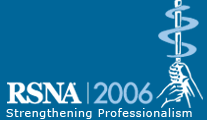
Abstract Archives of the RSNA, 2006
LL-NM2092-H07
Fractal Texture Analysis of Lung Scan for Diagnosis of Pulmonary Embolism
Scientific Posters
Presented on November 28, 2006
Presented as part of LLNM-H: Nuclear Medicine
Kyung-Hoon Hwang MD, Presenter: Nothing to Disclose
Jung-Chul Lee, Abstract Co-Author: Nothing to Disclose
Hyung-Ji Lee PhD, Abstract Co-Author: Nothing to Disclose
Young-Cheol Kim MD, Abstract Co-Author: Nothing to Disclose
Kyong-Sik Om PhD, Abstract Co-Author: Nothing to Disclose
Wonsick Choe MD, Abstract Co-Author: Nothing to Disclose
Soojin Choi MD, Abstract Co-Author: Nothing to Disclose
Jun_Gu Lee, Abstract Co-Author: Nothing to Disclose
Jong Hyo Kim PhD, Abstract Co-Author: Nothing to Disclose
Duck-Joo Choi MD, Abstract Co-Author: Nothing to Disclose
Minki Yoon MD, Abstract Co-Author: Nothing to Disclose
et al, Abstract Co-Author: Nothing to Disclose
Although diagnosis of pulmonary embolism is very important in the patient management, the conventional lung scan is only diagnostic in a minority of cases and indeterminate in a majority. Fractal texture analysis is a popular method to analyze images. We investigated whether the fractal texture analysis of lung scan is helpful in interpreting lung scans in patients with suspected pulmonary embolism.
We retrospectively reviewed 41 lung perfusion scan images of patients who were suspected of pulmonary embolism (18 high probability, 17 low probability and 6 intermediate probability). Corresponding CT angiographic images were also reviewed. Bilateral oblique lung perfusion scan images were segmented with a minimum rectangular box including the each entire lung. The fractal dimension of the segmented oblique lung images were calculated by fractal analysis algorithm in image-J software. The calculated values of fractal dimension of oblique lung perfusion scan images were compared between the images of high and low probability and between the images of intermediate probability with embolism(+) CT angiography and embolism(-) CT angiography.
The calculated fractal dimension values of high probability lung images were significantly lower than those of low probability ones (p < 0.05). In the images of intermediate probability, the fractal analysis also effectively divided them into two positive and negative groups which were matched well with the corresponding CT angiographic findings.
The fractal texture analysis of perfusion lung scan is useful in the diagnosis of pulmonary embolism. Further studies including larger numbers of lung scan images of intermediate probability using more advanced algorithms are warranted.
Fractal
Texture analysis
Lung scan
Pulmonary embolism
Hwang, K,
Lee, J,
Lee, H,
Kim, Y,
Om, K,
Choe, W,
Choi, S,
Lee, J,
Kim, J,
Choi, D,
Yoon, M,
et al, ,
Fractal Texture Analysis of Lung Scan for Diagnosis of Pulmonary Embolism. Radiological Society of North America 2006 Scientific Assembly and Annual Meeting, November 26 - December 1, 2006 ,Chicago IL.
http://archive.rsna.org/2006/4442362.html

